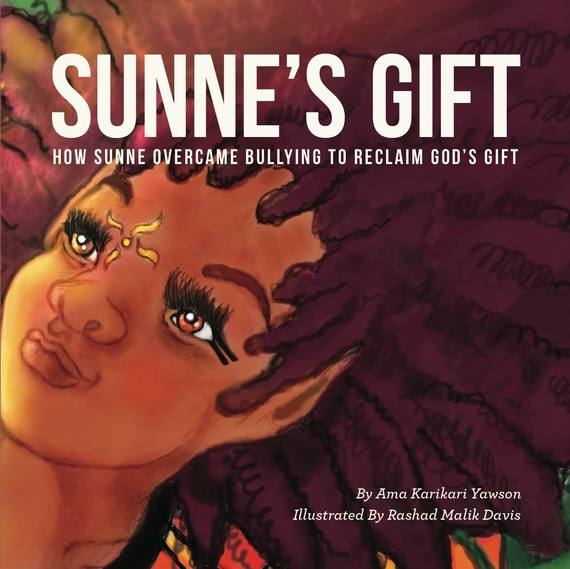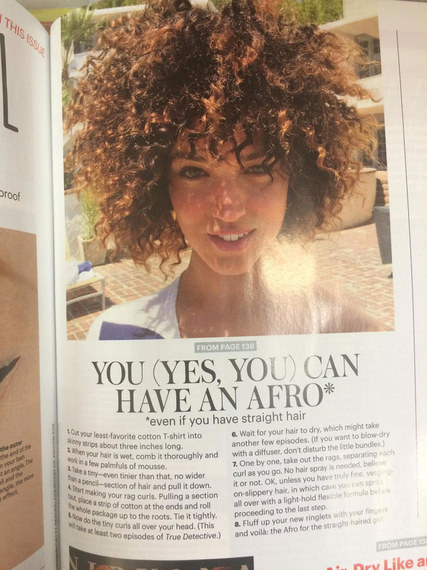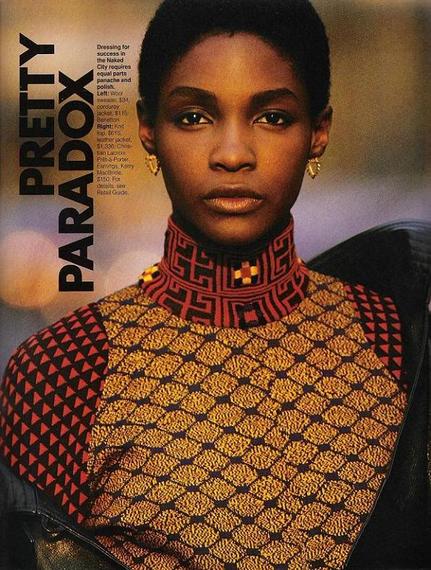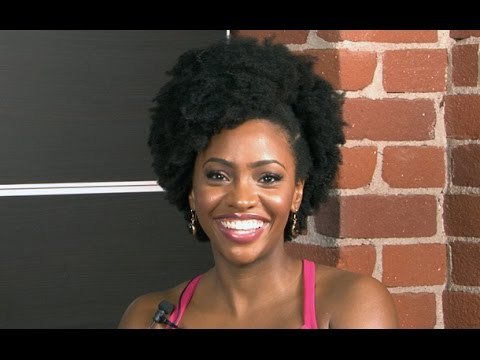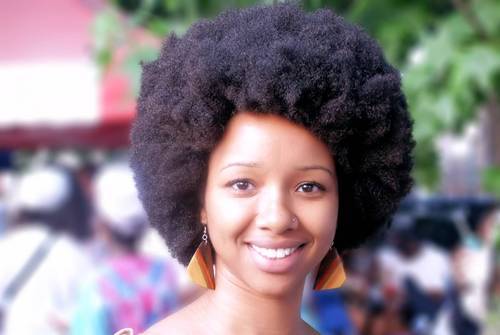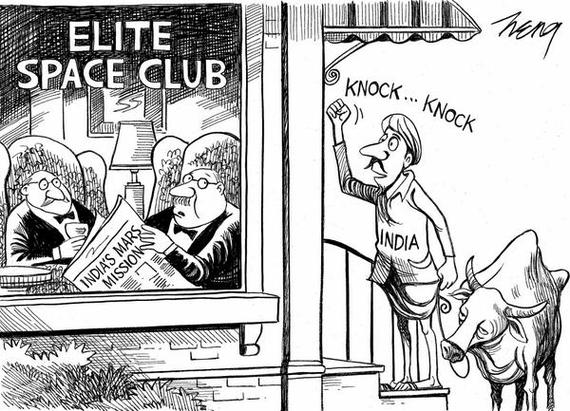Dear Allure, The New York Times and Other Lamestream Publications,
I hope that you all are well. Personally, I'm feeling tired. Why am I tired? I'm a bit tired of the same drill with you all over and over, and over again. You know the drill. One of you mainstream, aka "lamestream," publications publishes an article or statement perhaps about a "current" topic and diverse readers lash out against you all for cultural insensitivity, cultural appropriation, or general cluelessness.
The names of the publications alternate. It could be the NY Times, Teen Vogue or People. Different publications. Same story. When will you all ever learn?
Allure, are you there? This time it's you who is in the hot seat after you featured a white model in a tutorial on how straight haired women can achieve the look of a "soft, imperfect afro." Some readers referred to it as "caucasity" at its peak, foolishness and cultural appropriation. Sadly, your team refuses to apologize, and rather defends the feature as a simple expression of style and creativity.
Boo to you for not actually listening.
Please don't get me wrong, I see why you could think the way that you do. If I were to look at the feature in isolation, I would understand your point of view completely! A beauty magazine explores beauty. Straight hair, curly hair, and kinky hair are all beautiful, so why shouldn't women of all races be free to explore various styles? Come on now! I agree. I have absolutely no issue with straight haired white women wearing voluminous curly hairstyles. After all, some white women naturally have voluminous curly hair and curly perms targeting white women have been popular for over a century.
So why are people angry? They are angry because YOUR FEATURE IS NOT IN ISOLATION. It can never be isolated from the entire August Allure issue, Allure magazines of the past, or the reality of the mainstream beauty ideals in the U.S, for that matter.
Your magazine purports to be an American beauty magazine rather than a White American beauty magazine. Your tagline is "The Beauty Expert". But since your inception, you have been eagerly and enthusiastically supporting, promoting, and disseminating only one type of American beauty for the most part, European American beauty or white beauty through both your articles and approved advertisements.
Let's look at the one hundred and sixty pages of your infamous August issue. In the entire magazine which is chock full of images of women, often with many women on a single page, I have counted approximately twenty-eight images of non-white women or women who do not appear to be of predominantly European ancestry. Out of these approximately twenty-eight or so images of women of East Asian, South Asian, African or mixed ancestry, only ONE tiny 2 by 5 inch photo (sorry for my mark-up), features what I could remotely call a uniquely natural African phenotype. 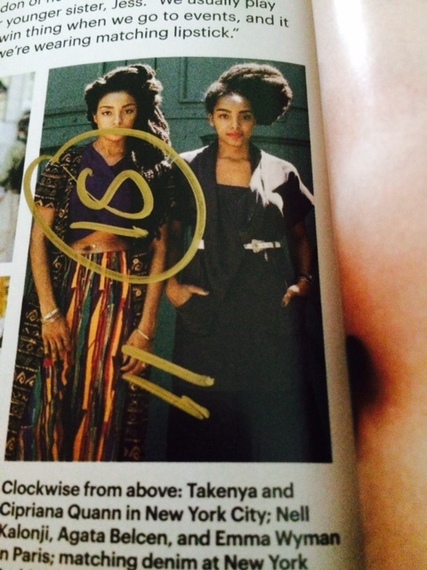 From my copy of Allure August 2014
From my copy of Allure August 2014
I am defining a unique natural African phenotype as the dark hued and kinky haired beauty that is almost exclusively found in people of predominantly African descent. Many American women naturally have this phenotype including Viola Davis, Kimberly Elise, Roshumba and Teyonah Parris. But sometimes, due to multiple pressures, these women go for a non-natural aesthetic with use of hair straighteners and straight weaves.
Nearly all of the very FEW images of black women in that issue are images of black women with straightened hair. Your magazine is unabashedly promoting a white and straight haired norm that contributes to the global phenomena of skin bleaching, hair straightening and straight hair weaves - all of which can have harmful health consequences such a cancer, uterine fibroids and skin diseases. But yet you feign ignorance as if you are not aware of the link between your images and notions of beauty and acceptability.
But despite your seeming lack of interest with respect to showcasing the unique natural African phenotype in your magazine as evidenced by your utter lack of dark skinned women with kinky hair, you decided to celebrate "rich cultural and aesthetic history" of afros by giving a white woman an "afro"? Give me a freaking break!!!!!
The beauty industry repeatedly celebrates disembodied aspects of the African aesthetic without actually celebrating the women who have a unique natural African aesthetic. Thick lips are in, unless the person is actually a black woman with naturally thick lips. Dark skin is in, but only if it was attained by a white woman on holiday or at a tanning salon. Now, afro inspired hair is in, except on a black woman who naturally grows an afro. But why???
Meanwhile, girls and women who actually grow an afro naturally are being kicked out of schools and jobs because their hair is deemed rebellious, or "ballsy" as stylist McMillan in your magazine puts it, despite the fact that it is how their hair is genetically programmed to grow. As journalist Zeba Blay points out, your feature ignores the societal history and current issues surrounding afro-textured hair.
In this TEDx talk, Ama Karikari-Yawson discusses hair discrimination in U.S. schools and its impact on America's future
Moreover, by deeming the voluminous curly hairstyle an "afro", when it is not the kinky bushy hair that the vast majority of people people of African descent possess and call an afro - you are erasing the originators of the style and re-appropriating the name.Ask Ebony editor Jamilah Lemieux.
I understand that your job is tough because your work is nuanced and it is impossible to please all of the people all of the time.I don't think that many of you mainstreamers are malicious. I know, love and respect my personal mentors and friends who write and manage content for mainstream publications. I believe that most of you are genuinely shocked at the backlash because you all have been doing the same thing for so long that most people are accustomed to disproportionately white images and constructs in magazines that claim to be "general" magazines. We all have bind spots and make mistakes accordingly. For example I myself have twice made the mistake of assuming that male colleagues were married to wives and not husbands!!!! My blind spot surrounded sexual orientation.
But, during this time of social change and this technological climate of immediate reader feedback, your continued lack of awareness is inexcusable.
Sadly Allure, you have a lot of company
Teen Vogue provoked anger when it used a white model to demonstrate the African hairstyle of Senegalese twists.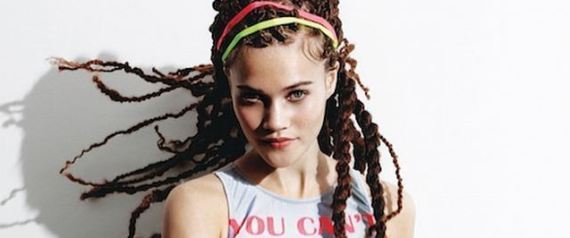
White model wears her hair in Senegalese twists for Teen Vogue.
People magazine was blasted when it invoked the stereotypical black maid role during Viola Davis' role of a law professor on How To Get Away with Murder.
The NY Times often seems clueless.
For example, in late 2014, the NY Times published an article about admiration for butts being a brand new American trend despite the fact that African-Americans have admired butts since before they were Americans. Ancient African sculptures have depicted protruding butts as the normal admirable female form and African American artists have admired female protruding butts in paintings and in song forever. Anyone who has watched the artwork of Ernie Barnes on the show Good Times can appreciate this point.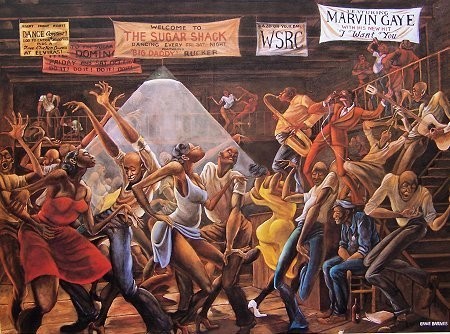
Ernie Barnes' Sugar Shack
This resilient appreciation for women with protruding butts by African Americans survived the European mix of disdain, ridicule, curiosity and closeted appreciation for such body types as evidenced by exploitation of the Southern African woman Saartije Baartman. Saartije Baartman was lured from her homeland about 200 years ago and then prostituted and paraded around Europe as a freakshow because of her large buttocks. Rumour has it that she died of syphillis. Her body parts were on display in Paris until the 1970's and were not returned to South Africa until 2002 after a personal appeal by Nelson Mandela. The NY Times article on butts reaked of Columbusing, or the presentation of something as a discovery only when white Americans discover it or validate it.
This letter is getting long because there are too many examples!!!!! But just let me give you a few more.
Also in 2014, The NY Times provoked outrage again when Alessandra Stanley referred to Viola Davis as "older, darker-skinned and less classically beautiful than" Kerry Washington. It never occurred to Stanley that for some of her readers who are African American, Viola Davis is a classic beauty. She possesses the classic beauty of Cicely Tyson, the noble bearing of Nina Simone, and the elegant grace of Miriam Makeba.
This same implicit assumption that everyone aspires to a white, pale, straight, blonde haired and rail thin beauty ideal was evident in the NY Times more recent article on the body issues of female tennis players. By devoting an entire article on how other female tennis players try hard not to look anything like Serena Williams in order to remain "feminine", the NY Times assumed that all people equate rail thin non-muscular frames as feminine. Had they read Demetria Lucas D'Oyley's' essay about black women and body image from a year earlier, or scores of reports on black women and body image, they would know that African Americans very often consider the ample breasts and ample buttocks of Serena as very feminine irrespective of muscularity.
But what would one expect from a publication that uses "no angel" disproportionately to describe black victims such as Michael Brown? In an August 2014 article on Michael Brown, John Eligon described Michael Brown as a"handful" because he would try to climb his parent's security gate. Eligon seemed to use that childhood behavior as a harbinger of a troubled future. As a mom, I know that such little boy behavior is commonplace and may reveal a spirit of curiosity and perseverance, but black boys rarely receive positive interpretations for their quirky behavior, even from other black people.
To a certain extent, the mainstream media represents all that people of African descent disdain about white privilege and white supremacy. It represents provincial arrogance parading as knowledge, biased opinion perpetrating as fact, and eurocentric notions posing as universal truths. Moreover, no matter how much I and others try to disengage by reading more alternative media publications such as The Amsterdam News, New Growth Hair or Naturally Happy Hair, we inevitably find ourselves reading mainsteam media again because, like white supremacy, mainstream media seems ubiquitous.
But of course, the mainstream media does not just stereotype people of African descent. For example, last year when India became the first Asian nation to reach Mars, I saw the following photo on my facebook feed and I was elated.
Indian scientists celebrate successful Mars mission.
The photo of the Indian women scientists in their colorful saris touched me to tears. I imagined later seeing African women scientists in kente cloth kaba and slits after a successful interplanetary mission.
Sharanya Haridas explains how the NY Times appears to belittle the achievement with the following cartoon depicting a poor Indian farmer with a bored cow who is being ignored as he tries to gain entry into the elite space club consisting of elderly, white and seemingly wealthy men.
Perhaps, the elite club of mainstream media feels similarly about the perspectives, experiences, and cultures of its readers of color. Allure, NY Times, Vogue, People and other mainstream publications, I have some serious questions to ask. Are you interested in actually being American publications and not just white American publications that engage in tokenism? Are you genuinely interested in respectfully engaging diverse readers ? Do you really want to be a force for social improvement in the United States during this challenging time? Are you committed to the professional improvement of your journalists? If so, the willful blindness should end. If you don't know, you better ask somebody! You can even ask me. I engage in cultural sensitivity, cultural responsiveness, and bullying prevention workshops at schools, corporations, correctional facilities and other organizations, through my publishing and consulting company Milestales. Call me at 347-886-2026 or email me at milestalespublishing@gmail.com. I will happily create customized workshops for your organizations. Additionally, I will gladly suggest other educators and resources.The question is, are you all committed enough to progress to engage in that work?
Sincerely,
Ama Karikari-Yawson
Author of Sunne's Gift
Founder of Milestales Publishing and Education Consulting